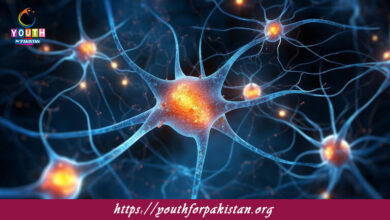Enthalpy Of A Reaction MDCAT MCQs with Answers

Welcome to the Enthalpy Of A Reaction MDCAT MCQs with Answers. In this post, we have shared Enthalpy Of A Reaction Multiple Choice Questions and Answers for PMC MDCAT 2024. Each question in MDCAT Chemistry offers a chance to enhance your knowledge regarding Enthalpy Of A Reaction MCQs in this MDCAT Online Test.
The enthalpy change for a reaction is defined as:
a) The change in internal energy only
b) The heat absorbed or released at constant volume
c) The heat absorbed or released at constant pressure
d) The change in kinetic energy
An endothermic reaction is characterized by:
a) Positive enthalpy change
b) Negative enthalpy change
c) No change in enthalpy
d) The release of heat
The enthalpy of formation (ΔH_f) of a substance is:
a) The heat released when one mole of a compound is formed from its elements in their standard states
b) The heat absorbed when one mole of a compound is formed from its elements in their standard states
c) The heat absorbed when one mole of a compound is decomposed
d) The heat released during a phase transition
For an exothermic reaction, the enthalpy change (ΔH) is:
a) Positive
b) Negative
c) Zero
d) Variable
The standard enthalpy change of reaction (ΔH_r°) is:
a) The enthalpy change when the reaction is carried out at 25°C and 1 atm
b) The enthalpy change when the reaction is carried out at 0°C and 1 atm
c) The enthalpy change when the reaction is carried out at 100°C and 1 atm
d) The enthalpy change when the reaction is carried out at 0°C and 0.5 atm
The enthalpy change for a reaction can be determined using:
a) Hess’s Law
b) Raoult’s Law
c) Henry’s Law
d) Dalton’s Law
Hess’s Law states that:
a) The total enthalpy change for a reaction is the sum of the enthalpy changes for the individual steps
b) The total enthalpy change for a reaction depends on the temperature
c) The enthalpy change of a reaction is independent of the path taken
d) The enthalpy change of a reaction can only be measured directly
The enthalpy change of a reaction is often represented by:
a) ΔH
b) ΔS
c) ΔG
d) ΔU
The heat absorbed or released in a reaction can be measured using:
a) A calorimeter
b) A barometer
c) A voltmeter
d) A spectrometer
The enthalpy change for a reaction can be affected by:
a) Temperature
b) Pressure
c) Concentration
d) All of the above
In a reaction where ΔH is positive, the reaction is classified as:
a) Exothermic
b) Endothermic
c) Isothermal
d) Adiabatic
If the enthalpy change of a reaction is -100 kJ/mol, the reaction is:
a) Endothermic
b) Exothermic
c) Isothermal
d) Isobaric
The enthalpy change of combustion is:
a) The heat released when one mole of a substance is burned completely in oxygen
b) The heat absorbed when one mole of a substance is dissolved in water
c) The heat released during a phase transition
d) The heat absorbed when one mole of a substance reacts with another
The standard enthalpy of reaction can be used to calculate:
a) The equilibrium constant
b) The rate of reaction
c) The enthalpy change of a reaction
d) The activation energy
The enthalpy of solution refers to:
a) The heat absorbed or released when a solute dissolves in a solvent
b) The heat released during a chemical reaction
c) The heat absorbed during a phase change
d) The heat released during phase transition
For the reaction: A + B → C + D, if ΔH = -50 kJ/mol, the reaction is:
a) Exothermic
b) Endothermic
c) Isothermal
d) Isobaric
The enthalpy change of a reaction can be directly measured by:
a) Using a calorimeter
b) Measuring the rate of reaction
c) Measuring the equilibrium constant
d) Using a voltmeter
The standard enthalpy of formation of a compound is:
a) Always positive
b) Always negative
c) Zero for elements in their standard states
d) Equal to the enthalpy of reaction
The enthalpy change of a reaction is independent of:
a) The initial and final states
b) The reaction path
c) The temperature
d) The pressure
The enthalpy change of a reaction at constant pressure can be represented as:
a) ΔH_p
b) ΔH
c) ΔU
d) ΔG
The enthalpy change for the reaction: 2H₂(g) + O₂(g) → 2H₂O(l) is:
a) The heat released during combustion
b) The heat absorbed during formation
c) The heat released during dissolution
d) The heat absorbed during a phase change
The enthalpy of reaction can be affected by:
a) Temperature changes
b) Pressure changes
c) The physical state of the reactants and products
d) All of the above
In an endothermic reaction, the system absorbs heat from the surroundings, which results in:
a) A decrease in the system’s enthalpy
b) An increase in the system’s enthalpy
c) No change in the system’s enthalpy
d) A decrease in the surroundings’ temperature
The enthalpy change for a reaction can be influenced by:
a) The concentration of reactants and products
b) The presence of a catalyst
c) The nature of the reactants and products
d) All of the above
For the reaction: N₂(g) + O₂(g) → 2NO(g), if ΔH is positive, the reaction is:
a) Exothermic
b) Endothermic
c) Isothermal
d) Adiabatic
The enthalpy change for the reaction: 2H₂(g) + O₂(g) → 2H₂O(g) is:
a) The heat released during formation
b) The heat absorbed during formation
c) The heat released during combustion
d) The heat absorbed during dissolution
The enthalpy change of vaporization refers to:
a) The heat absorbed when a liquid turns into a gas
b) The heat released when a gas turns into a liquid
c) The heat absorbed when a solid turns into a liquid
d) The heat released when a liquid turns into a solid
The enthalpy of fusion refers to:
a) The heat absorbed when a solid turns into a liquid
b) The heat released when a liquid turns into a solid
c) The heat absorbed when a gas turns into a liquid
d) The heat released when a gas turns into a solid
The enthalpy of reaction can be measured using:
a) A bomb calorimeter
b) A pressure gauge
c) A pH meter
d) A conductivity meter
The enthalpy change of a reaction can be used to calculate:
a) The change in internal energy
b) The change in free energy
c) The change in entropy
d) The reaction quotient
If the enthalpy change of a reaction is negative, the reaction is:
a) Endothermic
b) Exothermic
c) Isothermal
d) Isobaric
The enthalpy change of a reaction can be determined indirectly using:
a) Hess’s Law
b) Raoult’s Law
c) Henry’s Law
d) Dalton’s Law
The standard enthalpy of reaction is often given in units of:
a) kJ/mol
b) J/g
c) kJ/g
d) J/mol
The enthalpy change for a reaction is typically measured under:
a) Constant pressure
b) Constant temperature
c) Constant volume
d) Constant concentration
In a reaction, if ΔH is zero, the reaction is:
a) Isothermal
b) Adiabatic
c) Isobaric
d) Isentropic
The enthalpy change associated with a phase change is known as:
a) The enthalpy of vaporization
b) The enthalpy of fusion
c) The enthalpy of dissolution
d) The enthalpy of reaction
The enthalpy change for the reaction: H₂(g) + ½ O₂(g) → H₂O(l) is:
a) The heat released during combustion
b) The heat absorbed during formation
c) The heat released during dissolution
d) The heat absorbed during vaporization
The enthalpy change for a reaction is influenced by:
a) The temperature
b) The pressure
c) The physical state of the reactants and products
d) All of the above
The enthalpy change of a reaction can be measured using a:
a) Calorimeter
b) Barometer
c) Voltmeter
d) Thermometer
The enthalpy change for the reaction of hydrogen and oxygen to form water is:
a) Positive and endothermic
b) Negative and exothermic
c) Zero and isothermal
d) Variable depending on conditions
If you are interested to enhance your knowledge regarding Physics, Chemistry, Computer, and Biology please click on the link of each category, you will be redirected to dedicated website for each category.




